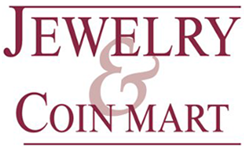Coins have a lot of characteristics, so how can you recognize a counterfeit?
First you must know what a genuine coin looks like. Becoming a coin detective requires familiarity with key characteristics to launch your investigation. Here are a few to know:
- Heads= Front of the Coin, Obverse, Often features an emblem or ruler.
- Tails Back of the Coin, Reverse, Often features the Coin's value.
- Rim: A raised area near the edge that protects from wear and tear.
- Mint mark: A small letter or symbol that shows where the Coin was made. For instance, in the U.S., "P" stands for Philadelphia, "D" for Denver, "S" for San Francisco, and "W" for West Point.
For example:

"Did you spot the difference? "The fake (top) displays shaky letters, while the letters on the genuine example (below) are smooth. (Photos: Numismatic Guaranty Company)"
What are the traits of a fake?
- If you're getting an excellent deal
- If there is an abnormal yellow color
- If there are odd flat surfaces
- If there are softer details, i.e., the hair is smooth
- If the Coin fades away in certain spots
- If the date is round or enlarged
- If the letters are wobbly
While a coin's border can be plain, lettered, reeded, or decorated, if it has ridged edges, it makes it harder to counterfeit. Even if you learn that your Coin is counterfeit, bring it into our store, and we can evaluate its worth for you. While not ideal, buying a counterfeit is more common than you think. Be wary and always curious to know the truth.
For hundreds of years, coins served only as a method of payment. While that is still true today, coins are now collectibles. Even collectors make mistakes, so if you discover a coin is counterfeit, don't panic. It is possible that it still retains some value, albeit to a limited extent.
Visit our store to view our collection or sell your coins to us! We're real!

